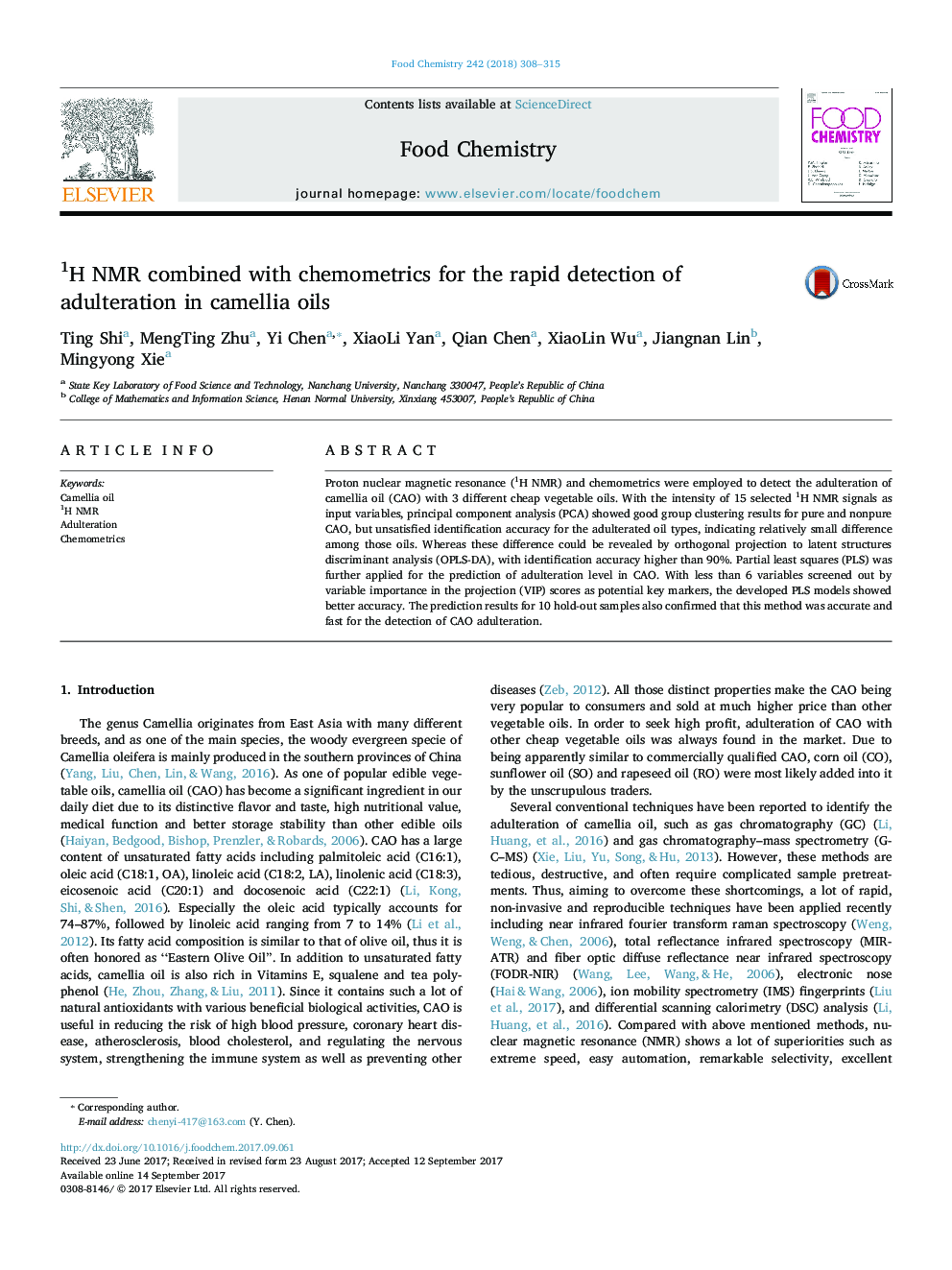| Article ID | Journal | Published Year | Pages | File Type |
|---|---|---|---|---|
| 5132611 | Food Chemistry | 2018 | 8 Pages |
â¢1H NMR and chemometrics were employed to detect the adulteration of camellia oil.â¢PCA and OPLS-DA can help discriminate the specific adulterated oil types.â¢PLS can successfully predict the adulterated level.â¢Less than 6 variables were screened out by VIP scores as potential key markers.â¢Out of sample validation results confirmed this method was accurate and fast.
Proton nuclear magnetic resonance (1H NMR) and chemometrics were employed to detect the adulteration of camellia oil (CAO) with 3 different cheap vegetable oils. With the intensity of 15 selected 1H NMR signals as input variables, principal component analysis (PCA) showed good group clustering results for pure and nonpure CAO, but unsatisfied identification accuracy for the adulterated oil types, indicating relatively small difference among those oils. Whereas these difference could be revealed by orthogonal projection to latent structures discriminant analysis (OPLS-DA), with identification accuracy higher than 90%. Partial least squares (PLS) was further applied for the prediction of adulteration level in CAO. With less than 6 variables screened out by variable importance in the projection (VIP) scores as potential key markers, the developed PLS models showed better accuracy. The prediction results for 10 hold-out samples also confirmed that this method was accurate and fast for the detection of CAO adulteration.
